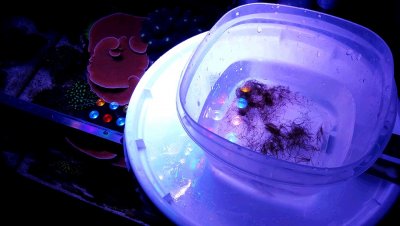Thanks @Jose Mayo -- A friend actually told me to use h202 spot treatment as well. I'm guessing 1-3ml for a single spot with the flow off. I'm also guessing I shouldn't do more than 5ml per day, so I'd only treat one or two spots a day. My tank is a 24x24x18", so not very large.
Does this sound good to you @Jose Mayo
Does this sound good to you @Jose Mayo
Last edited:


















